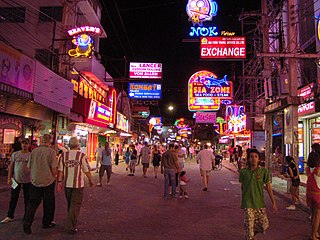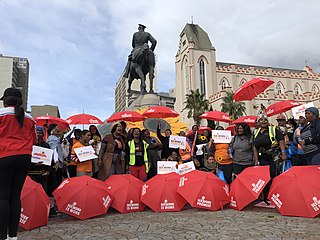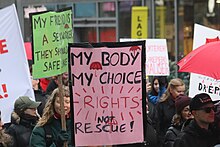
A sex worker is a person who provides sex work, either on a regular or occasional basis. The term is used in reference to those who work in all areas of the sex industry.

Sex work is "the exchange of sexual services, performances, or products for material compensation. It includes activities of direct physical contact between buyers and sellers as well as indirect sexual stimulation". Sex work only refers to voluntary sexual transactions; thus, the term does not refer to human trafficking and other coerced or nonconsensual sexual transactions such as child prostitution. The transaction must take place between consenting adults of the legal age and mental capacity to consent and must take place without any methods of coercion, other than payment. The term emphasizes the labor and economic implications of this type of work. Furthermore, some prefer the use of the term because it grants more agency to the sellers of these services.

Prostitution in Thailand is not illegal. Section 5 of the relevant Act makes that very clear. What is forbidden is openly and shamelessly offering sexual services or causing a public nuisance. However, due to police corruption and an economic reliance on prostitution dating back to the Vietnam War, it remains a significant presence in the country. It results from poverty, low levels of education and a lack of employment in rural areas. Prostitutes mostly come from the northeastern (Isan) region of Thailand, from ethnic minorities or from neighbouring countries, especially Cambodia, Myanmar, and Laos. In 2019, UNAIDS estimated the total population of sex workers in Thailand to be 43,000.
The Coalition Against Trafficking in Women (CATW) is an international radical feminist non-governmental organization opposing human trafficking, prostitution, and other forms of commercial sex. It has been described as a "neo-abolitionist lobby group" that represents a "carceral feminist anti-trafficking practice," and has been criticized for essentializing women and promoting a controversial and "ideologically charged" definition of trafficking. It is strongly opposed to the perspectives of the Global Alliance Against Traffic in Women and the sex workers rights movement. It has been linked to anti-trans groups and its Latin American regional branch is a signatory of the manifesto of Women's Declaration International.
Prostitution in Guatemala is legal but procuring is prohibited. There is an offence of “aggravated procuring” where a minor is involved. Keeping a brothel is not prohibited.
Prostitution in South Africa is illegal for both buying and selling sex, as well as related activities such as brothel keeping and pimping. However, it remains widespread. Law enforcement is poor.
Prostitution is the business or practice of engaging in sexual activity in exchange for payment. The definition of "sexual activity" varies, and is often defined as an activity requiring physical contact with the customer. The requirement of physical contact also creates the risk of transferring infections. Prostitution is sometimes described as sexual services, commercial sex or, colloquially, hooking. It is sometimes referred to euphemistically as "the world's oldest profession" in the English-speaking world. A person who works in this field is called a prostitute, and sometimes a sex worker, but the words hooker and whore are also sometimes used to describe those who work as prostitutes.
Current laws passed by the Parliament of Canada in 2014 make it illegal to purchase or advertise sexual services and illegal to live on the material benefits from sex work. The law officially enacted criminal penalties for "Purchasing sexual services and communicating in any place for that purpose."

Prostitution in Ukraine is illegal but widespread and largely ignored by the government. In recent times, Ukraine has become a popular prostitution and sex trafficking destination. Ukraine is a source, transit, and destination country for women and children trafficked transnationally for the purposes of commercial sexual exploitation. Ukraine's dissolution from the Soviet Union, saw the nation attempt to transition from a planned economy to a market economy. The transition process inflicted economic hardship in the nation, with nearly 80% of the population forced into poverty in the decade that followed its independence. Unemployment in Ukraine was growing at an increasing rate, with female unemployment rising to 64% by 1997. The economic decline in Ukraine made the nation vulnerable and forced many to depend on prostitution and trafficking as a source of income. Sex tourism rose as the country attracted greater numbers of foreign tourists.
The World Charter for Prostitutes' Rights is a declaration of rights adopted in 1985 to protect sex workers' rights worldwide. It was adopted on 15 February 1985 at the first World Whores Congress in Amsterdam by the newly formed International Committee for Prostitutes' Rights (ICPR). The Charter established a human rights-based approach to prostitution, demanding that sex workers be guaranteed freedom of speech, travel, immigration, work, marriage, motherhood, health, and housing, amongst other things. This approach has subsequently been further elaborated by the sex workers' rights movement.

Prostitution laws varies widely from country to country, and between jurisdictions within a country. At one extreme, prostitution or sex work is legal in some places and regarded as a profession, while at the other extreme, it is considered a severe crime punishable by death in some other places. A variety of different legal models exist around the world, including total bans, bans that only target the customer, and laws permitting prostitution but prohibiting organized groups, an example being brothels.
Prostitution in Namibia is legal and a highly prevalent common practice. Related activities such as solicitation, procuring and being involved in the running of a brothel are illegal. A World Bank study estimated there were about 11,000 prostitutes in Namibia.
Prostitution in Botswana is not illegal, but laws such as public disorder, vagrancy, loitering and state recognised religious provisions are used to prosecute prostitutes. Related activities such as soliciting and brothel keeping are illegal. Botswana has made proposals to make prostitution legal to prevent the spread of AIDS. However, there has been mass opposition to it by the Catholic Church. Prostitution is widespread and takes place on the street, bars, hotels, brothels and the cabs of long-distance trucks.
Migrant sex work is sex work done by migrant workers. It is significant because of its role as a dominant demographic of sex work internationally. It has common features across various contexts, such as migration from rural to urban areas and from developing to industrialized nations, and the economic factors that help to determine migrant status. Migrant sex workers have also been the subject of discussions concerning the legality of sex work, its connection to sex trafficking, and the views of national governments and non-governmental organizations about the regulation of sex work and the provision of services for victims of sex trafficking.

The decriminalization of sex work is the removal of criminal penalties for sex work. Sex work, the consensual provision of sexual services for money or goods, is criminalized in most countries. Decriminalization is distinct from legalization.

Global Network of Sex Work Projects (NSWP) is an organisation that advocates for the health and human rights of sex workers. It is a private not-for-profit limited company, based in Edinburgh, Scotland, and founded in November 1990. NSWP is a membership organisation, with members from five regions. NSWP publishes resources, including briefing papers, policy briefs, community guides, global and regional reports, smart guides, statements, the Research for Sex Work Journal, and case studies. It supports the decriminalization of sex work.

The Nordic Criminal Model approach to sex work, also marketed as the end demand, equality model, neo-abolitionism, Nordic and Swedish model, is an approach to sex work that criminalises clients, third parties and many ways sex workers operate. This approach to criminalising sex work was developed in Sweden in 1999 on the debated radical feminist position that all sex work is sexual servitude and no person can consent to engage in commercial sexual services. The main objective of the model is to abolish the sex industry by punishing the purchase of sexual services. The model was also originally developed to make working in the sex industry more difficult, as Ann Martin said when asked about their role in developing the model - "I think of course the law has negative consequences for women in prostitution but that's also some of the effect that we want to achieve with the law... It shouldn't be as easy as it was before to go out and sell sex."
Sex worker abuse by police officers can occur in one or more ways. Police brutality refers to the intentional use of excessive force by a police officer, be it physical, verbal, or psychological. Police corruption is a form of police misconduct where an officer obtains financial benefits and/or career advancements in exchange for not pursuing, or selectively pursuing, an investigation or arrest. Police misconduct refers to inappropriate actions taken by police officers in connection with their official duties. Sex workers, particularly poor sex workers and those who had been manipulated, coerced, or forced into sex work, are at risk of being obliged or otherwise forced to provide free sexual services to police officers out of fear of being harmed or arrested. Some sex workers have reported that they have encountered police officers who have physically assaulted them without evidence of a crime and without making an arrest.

Feminist perspectives on sex markets vary widely, depending on the type of feminism being applied. The sex market is defined as the system of supply and demand which is generated by the existence of sex work as a commodity. The sex market can further be segregated into the direct sex market, which mainly applies to prostitution, and the indirect sex market, which applies to sexual businesses which provide services such as lap dancing. The final component of the sex market lies in the production and selling of pornography. With the distinctions between feminist perspectives, there are many documented instances from feminist authors of both explicit and implied feminist standpoints that provide coverage on the sex market in regards to both "autonomous" and "non-autonomous" sex trades. The quotations are added since some feminist ideologies believe the commodification of women's bodies is never autonomous and therefore subversive or misleading by terminology.
Sex worker movements address issues of labor rights, gender-related violence, social stigma, migration, access to health care, criminalization, and police violence and have evolved to address local conditions and historical challenges. Although accounts of sex work dates back to antiquity, movements organized to defend sex workers' rights are understood as a more recent phenomenon. While contemporary sex worker rights movements are generally associated with the feminist movement of the 1970s and 1980s in Europe and North America, the first recorded sex worker organization, Las Horizontales began in 1888 in Havana, Cuba.













